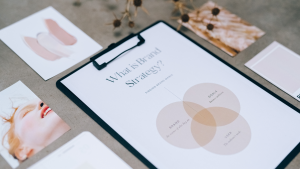The traditional meeting note-handwritten in longhand, edited into a document after the meeting, and finally converted to an email-is a time-tested method of keeping track of discussion topics, decisions, and highlights. However, meetings are becoming more virtual, with more attendees participating via phone and using tools such as Zoom or Skype for Business. Using these tools, attendees take notes during meetings the same way they take them during coaching sessions. They include rich information, such as who mentioned which topic, who said what, and who said what to whom.
Your meeting notes are a quick way to capture important information, actions, and decisions from your meeting or conference. They can also be used to assess the effectiveness of your meeting or conference and serve as a record of the meeting. Meetings notes also offer an opportunity to share lessons learned and to develop new strategies.
Choose A Note-Taking Method That Works for You
You love attending meetings and also conferences… but you hate taking notes. If you’ve been to enough meetings, conferences, or seminars, you know the drill: everyone takes great notes at the beginning of the meeting, but as the day or meeting progresses, more and more of the notes are forgotten.
If you’re responsible for taking notes in meetings and conferences, you’ve probably felt the frustration of trying to do your job while staying alert. It’s especially tiresome since most people seem to forget that taking notes is a skill that can easily be practiced. Tools like fathom notetaker can make the process more efficient by helping you capture important details without missing a beat. There are dozens of note-taking techniques available, and choosing one that works is just a matter of personal preference.
Ditch The Laptop-Use Pen And Paper Instead
We use laptops and tablets all of the time. We’re used to typing in information, checking our email, surfing the web, and taking notes. But there is really no reason why we should not be using traditional ballpoint pens and paper. There’s a reason those old-school note-taking methods worked so well: They’re fast. And, if you’re really trying to get the most out of your meetings, conferences, and training sessions, speed matters.
When was the last time your notes from your conference or meeting were legible? Oh, right, never. We are guessing you’ve probably resorted to scribbling notes on your phone or jotting down a summary on a tablet. Both methods are not ideal. But what happens when you have space in your brain for things that aren’t conference notes? If you are still worried about a pen-and-paper note-taking experience, there’s a solution. Check out Evernote, which organizes your notes for you by person, topic, and date, so you can quickly look back and find information. You could also check out this Evernote alternative if you are looking for other options for automated note-taking. It can also can easily transcribe, translate, summarize and extract key insights with precise transcription from your online video calls and meetings.
Do Not Write Everything Down Verbatim.
When you attend a meeting, conference, or gathering, take notes. Don’t just scribble, however. Take notes on key points, ideas, and the conversation. If you take them each day, you can refer back to them later.
The majority of meetings are not about just getting information. They’re also about networking, forming partnerships, solving problems, and making decisions. This is why taking notes plays a crucial role in meetings, conferences, and training-especially if you’re giving the information. If you don’t take them, you may miss important details or details that could help make a decision.
Use A Note-Taking Template
When it comes to meetings, many professionals feel obligated to take notes. There is a great benefit to doing so. They allow you to revisit the meeting and identify key points and points of reference when needed. Whether you are taking notes during a business meeting or a conference, capturing all the information you hear is important. But taking them can be a drag, and it’s easy to lose track of who said what. If you apply a simple note-taking template to all your meetings, however, you’ll be able to quickly jot down all the important details and save your meeting notes afterward.
Assign A Specific Note-Taker For The Meeting
The meeting planner has to juggle 3 or 4 balls literally:
- Keeping everything on schedule.
- Managing the expectations of attendees.
- Making sure the attendees receive valuable takeaways.
When planning a conference or meeting, it’s important to have as much information as possible ahead of time in order to execute a well-organized meeting. What good is a meeting or conference if no one can remember what was said? This goes for any business meeting, professional development seminar, or academic conference. While it may seem counterintuitive, people are more likely to remember things if they take notes.






